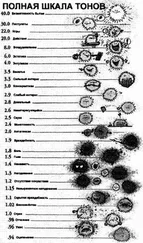См.., напр., Cillizza, C., ‘That Trump read “The Snake”’. CNN, 1 May 2017; http://edition.cnn.com/2017/05/01/politics/trump-the-snake/index.html.
Перевод с английского Михаила Шерба.
Baumeister, R. F., &, Campbell, W. K. ‘The intrinsic appeal of evil: sadism, sensational thrills, and threatened egotism’. Personality and Social Psychology Review , 3 (3) (1999), pp. 210-21.
Buckels, E. E., Jones, D. N., &, Paulhus, D. L. ‘Behavioral confirmation of everyday sadism’. Psychological Science , 24 (11) (2013), pp. 2201-09.
Aragón, O. R., Clark, M. S., Dyer, R. L., & Bargh, J. A. ‘Dimorphous expressions of positive emotion: displays of both care and aggression in response to cute stimuli’. Psychological Science , 26 (3) (2015), pp. 259-73.
Lorenz. К. ‘Die angeborenen Formen möglicher Erfahrung [Врожденные формы потенциального опыта]’. ZeitschriftfürTierpsychologie , 5 (1943), pp. 245-409.
Бэрон Р., Ричардсон Д. Агрессия. - СПб: Питер, 2001.
Richardson, D. S., &, Green, L. R. ‘Direct and indirect aggression: relationships as social context’. Journal of Applied Social Psychology, 36 (10) (2006), pp. 2492-508.
Leisring, P. A. ‘Physical and emotional abuse in romantic relationships: motivation for perpetration among college women’. Journal of Interpersonal Violence , 28 (7) (2013), pp. 1437-54.
Bushman, B. J., DeWa"- C. N., pond, R. S., &, Напш, M. D. ‘Low glucose relates to greater aggression in married couples’. Proceedings of the National Academy of Sciences , 111 (17) (2014), pp. 6254-57.
Richardson, d. g., & Green, L. R. ‘Direct and indirect aggression: relationships as social context’. Journal of Applied Social Psychology , 36 (10) (2006), pp. 2492-508.
Richardson, D. S. ‘Everyday aggression takes many forms’. Current Directions in Psychological Science , 23 (3) (2014), pp. 220-24.
Warren. P., Richardson, D. S., & McQuillin, S. ‘Distinguishing among nondirect forms of aggression’. Aggressive Behavior , 37 (2011), pp. 291-301.
Richardson, D. S., & Hammock. G. S. ‘is it aggression? Perceptions of and motivations for passive and psychological aggression’. The Psychology of Social Conflict and Aggression , 13 (2011), pp. 53-64.
Paulhus, D. L., Curtis, S. R., & Jones, D. N. ‘Aggression as a trait: the dark tetrad alternative’. Current Opinion in Psychology, 19 (2017), pp. 88-92.
Paulhus, D. L. ‘Toward a taxonomy of dark personalities’. Current Directions in Psychological Science, 23 (6) (2014), pp. 421-6.
Balsis, S., Busch, A. J., Wilfong, K. M., Newman, J. W., & Edens, J. F. ‘A statistical consideration regarding the threshold of the psychopathy checklist — revised’. Journal of Personality Assessment, 99 (5) (2017), pp. 1-9.
Augstein, H. F. ‘J. C. Prichard’s concept of moral insanity — a medical theory of the corruption of human nature’. Medical History, 40 (3) (1996), p. 311.
Hare, R. D. The Hare Psychopathy Checklist — Revised, 2nd ed. Toronto, ON: Multi-Health Systems, Inc., 2003.
Poeppl, T., Donges, M., Rupprecht, R., Fox, P., . . . & Eickhoff, S. ‘Meta-analysis of aberrant brain activity in psychopathy’. European Psychiatry, 41 (2017), S349.
Stromberg, J. ‘The neuroscientist who discovered he was a psychopath’. Smithsonian, 22 November 2013; http://www.smithsonianmag.com/science-nature/the-neuroscientist-who-di scovered-he-was-a-psychopath-180947814/.
Fallon, J. The Psychopath Inside: A Neuroscientist’s Personal Journey into the Dark Side of the Brain. London: Penguin, 2013.
Konrath, S., Meier, B. P., & Bushman, B. J. ‘Development and validation of the single item narcissism scale (SINS)’. PLOS ONE, 9 (8) (2014); https://doi.org/10.1371/journal.pone.0103469.
Goldbeck, J. ‘The one question that can tell us who’s a narcissist: a new study finds a surprising insight about personality’. Psychology Today, 16 September 2014; https://www.psychologytoday.com/blog/your-online-secrets/201409/the-one-question-can-tell-us-whos-narcissist/.
Krizan, Z., & Johar, O. ‘Narcissistic rage revisited’. Journal of Personality and Social Psychology, 108 (5) (2015), pp. 784-801; https://doi.org/10.1037/pspp0000013.
Jones, D. N., & Paulhus, D. L. ‘Machiavellianism’. In: M. R. Leary & R. H. Hoyle (eds), Handbook of Individual Differences in Social Behavior. New York: Guilford Press, 2009, pp. 93108.
Muris, P., Merckelbach, H., Otgaar, H., & Meijer, E. ‘The malevolent side of human nature: a meta-analysis and critical review of the literature on the dark triad (narcissism, Machiavellianism, and psychopathy)’. Perspectives on Psychological Science, 12 (2) (2017), pp. 183-204.
Christie, R., & Geis, F. L. Studies in Machiavellianism. New York, NY: Academic Press, 1970.
Buckels, E. E., Jones, D. N., & Paulhus, D. L. ‘Behavioral confirmation of everyday sadism’. Psychological Science, 24 (11) (2013), pp. 2201-09.
Campbell, W. K. ‘Is narcissism really so bad?’ Psychological Inquiry, 12 (4) (2001), pp. 21416.
Darimont, C. T., Fox, C. H., Bryan, H. M., & Reimchen, T. E. ‘The unique ecology of human predators’. Science, 349 (6250) (2015), pp. 858-60.
Kenrick, D. T., & Sheets, V. ‘Homicidal fantasies’. Ethology and Sociobiology, 14 (4) (1993), pp. 231-46.
Duntley, J. D., & Buss, D. M. ‘Homicide adaptations’. Aggression and Violent Behavior, 16 (5) (2011), pp. 399-410.
Норма права «ограниченная вменяемость» применяется при нарушениях умственного развития или снижении когнитивных функций, возникшем в результате алкогольной зависимости. — Прим. пер.
United Nations Office on Drugs and Crime. Global Study on Homicide 2013: Trends, Contexts, Data. New York: UNODC, 2013.
Roberts, A. R., Zgoba, K. M., & Shahidullah, S. M. ‘Recidivism among four types of homicide offenders: an exploratory analysis of 336 homicide offenders in New Jersey’. Aggression and Violent Behavior, 12 (5) (2007), pp. 493-507.
Татуировка в виде слезы под глазом — одна из распространенных тюремных татуировок в США. — Прим. ред.
Liem, M. ‘Homicide offender recidivism: a review of the literature’. Aggression and Violent Behavior, 18 (1) (2013), pp. 19-25.
Читать дальше
Конец ознакомительного отрывка
Купить книгу












